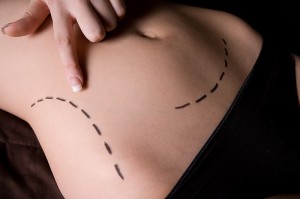Liposuction emerges in yet another form, thanks to the new “custom acoustics” technique. The new procedure not only requires less exertion from a surgeon, but also results in less bruising and discomfort to patients.

The “LipoVibe” technique is a form of custom acoustics liposuction (CAL), also called nutational infrasonic liposuction. It requires less exertion from a surgeon during the procedure and removes adipose tissue through a heat-free system of vibration and rotation, causing less trauma to the surrounding, non-fatty tissues. The system also allows the removed fat to survive so that it can be used in future fat transfers. And, because the technique’s “nutational,” or spinning, vibration system activates nerves that do not transmit painful signals, the procedure results in less bruising and discomfort to patients.
Although invented more than 40 years ago, liposuction technology has made tremendous leaps forward in recent years. Currently available methods include ultrasonic-assisted liposuction, “Vaser” (laser-assisted) liposuction, radio frequency liposuction and a water-assisted procedure. They all slightly differ in their techniques, but generally produce less bruising, swelling and soreness and offer a quicker recovery time than the traditional cannula method.
South Texas plastic surgeon Dr. Thomas Jeneby is one to vouch for the CAL procedure, saying he likes what it does for the patient, and for him.
“I am amazed by how much less physical effort on my part this new innovative form of liposuction takes,” Jeneby said. “The nutational 3-D mechanism of action enables me to glide through the fibrous fatty tissue more easily and is ideal for those patients who’ve had prior surgeries or scar tissue. My patients have a faster post-op recovery, less bruising and less pain. In fact, some of my patients say the 3-D vibration sensation from the cannula actually tickles them and they start laughing during the procedure.”
The CAL technique currently has approval from the Food and Drug Administration and already has been tested in public, at scientific forums. Reportedly it has been employed in more than 7,000 procedures since its worldwide introduction in 1997, though its use is new in the United States.







Facebook
Twitter
Instagram
YouTube
RSS